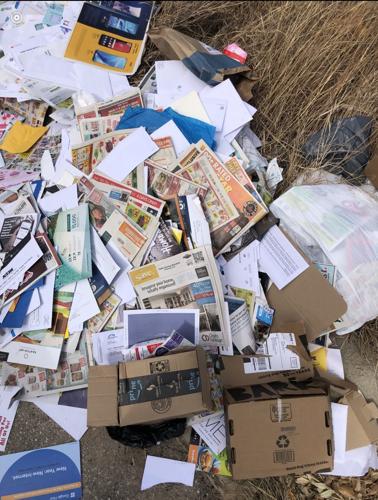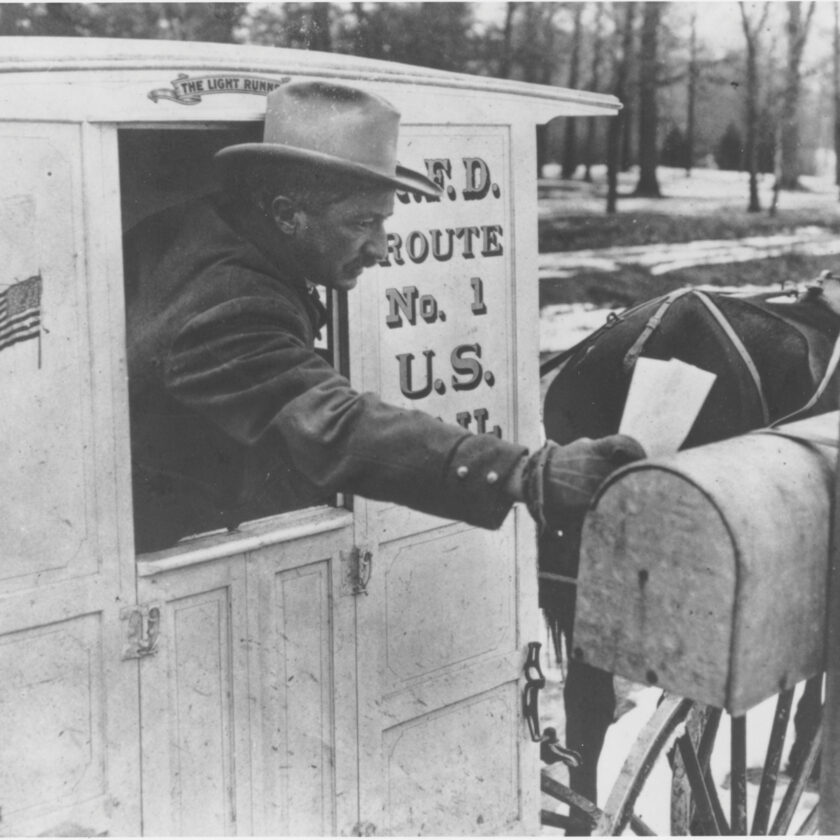There always have been occasional stories about somebody getting a letter or card that a long-dead relative had sent years or decades earlier. Where a piece of mail could spend such an interval was always the object of speculation: in an empty sack, stuck in an old letter case, behind a piece of post office furniture – who knows.
More recently, however, the news about missing or delayed mail has become both more frequent and less amusing.
You’ve NOT got mail

What would have been unthinkable once has now become simply disturbing: discarded mail – whether left along a road, tossed in a dumpster, or otherwise abandoned before reaching the intended recipients. The image of a postal worker simply ditching what they were charged with delivering, because they were too tired, or they had too much mail, or otherwise lacked the work ethic to finish their job, flies in the face of the traditional – and still generally applicable – image of a postal carrier completing her or his appointed rounds despite rain, sleet, or dead of night.
Similarly, but less severe, is the frequency of misdelivery. Long ago, when I actually carried mail on occasion, I was taught to riffle through the mail to ensure it was all for the mailbox in front of me, to make the effort to find the mailbox that wasn’t always in an obvious location, and to learn which names went into which receptacles. Something seems to have changed since those days, as we now have the inadvertent opportunity to meet our neighbors to give them what was delivered to us in error, or vice-versa.
But at least we get mail. Just as news of mail theft and mail being dumped has grown, so has news of places where people don’t get mail at all. There are always days when there’s no mail for some addresses, but that’s not the case when entire routes get no mail – for days. Senders complain about mail not reaching recipients, and recipients wonder why their mailboxes stay empty. Recent stories about customers in Colorado were not unique, as similar tales have emerged from rural and urban places nationwide.
Why?
Though there probably isn’t an academic study to back this up, there seem to be a few common threads in these reported situations.
Since the pandemic, there’s been a change in some of the population’s interest in a “career” in an industrial setting, if not in the willingness to work at all. As a result, the commitment to seeking work or staying at a job has weakened, leaving it hard for employers – whether the Postal Service or any other – to attract and keep employees.

For the USPS, it’s further challenged by its own practice of nationally uniform wages. Advertising jobs that start at $13 or $14 in an economically depressed area likely will draw much less interest in a high-cost area, and the quality of the applicants probably will vary as well. The best workers will seek, and get, better-paying jobs, leaving the less qualified to search for whatever else is available. The quality of workers today isn’t what it was a generation, or perhaps even five years, ago, either. Attitudes toward work, especially physical labor (like walking a mail route or driving a mail truck for a whole day), and general work ethics have worsened in recent years. In a mail delivery environment, that would result in the less dedicated employees – perhaps only temporary help – being tempted to ditch all the circulars they don’t want to deliver, or return to the delivery unit any pieces for which the delivery point (like a basket on a porch) wasn’t obvious, or that they’d missed because they’d not riffled the bundle in their hand or in the tray.
Training also may not be what it once was; training and onboarding people, in general, is expensive, so for an organization always looking to cut costs, putting people on delivery routes who are not fully comfortable with and prepared to fully execute their obligations could contribute to less than stellar performance.
Action or the lack thereof
Regardless of any weaknesses in a delivery operation, the carriers involved have to be provided mail by upstream operations if they’re to have something to deliver. If mail is not moving through the processing stream, carriers (or senders) are left to explain to addressees where expected mail is stuck. For example, an editorial in the Dickinson (ND) Press expressed the frustration of the newspaper over having to deal with customers calling about not receiving their copies on time, or not for weeks. That’s not a delivery problem if the carriers have no newspapers to deliver.
Similarly, a variety of anecdotal and media reports reflect the complaints about the time it takes – well beyond the published service standards – for other classes of mail to reach destinations all over the country.
The USPS says it’s hiring but if its recruiting or onboarding processes aren’t yielding enough new workers, what’s it doing to evaluate the situation and take steps to ameliorate whatever is suboptimal?

Perhaps the most galling aspect of this circumstance, however, is the Postal Service’s cavalier efforts to respond to customer complaints with stock phrases about “valuing your business” and “striving to provide excellent service.” People know corporate-speak when they see or hear it.
At the same time as it’s trying to low-peddle its problems in the field, it’s sending out weekly press releases about how its data is “showing consistent or improved delivery performance across all mail categories.” Somehow, the average time to deliver mail is consistently 2.5 days.
The juxtaposition of the Postal Service’s propaganda and the reports of real customers – from commercial senders to individual recipients – is stark, and begs the question of how the USPS can be so oblivious to the optics of the situation. Does it think no one notices, or that people are such dupes as to believe unquestioningly whatever it says? Are we all supposed to accept it as accurate just because the USPS said it? There’s a cynical doctrine that holds that people will come to believe official disinformation if it’s repeated with enough regularity. Based on what people experience compared to what the USPS claims, that seems to have become the public relations policy – or expectation – under PMG Louis DeJoy.





